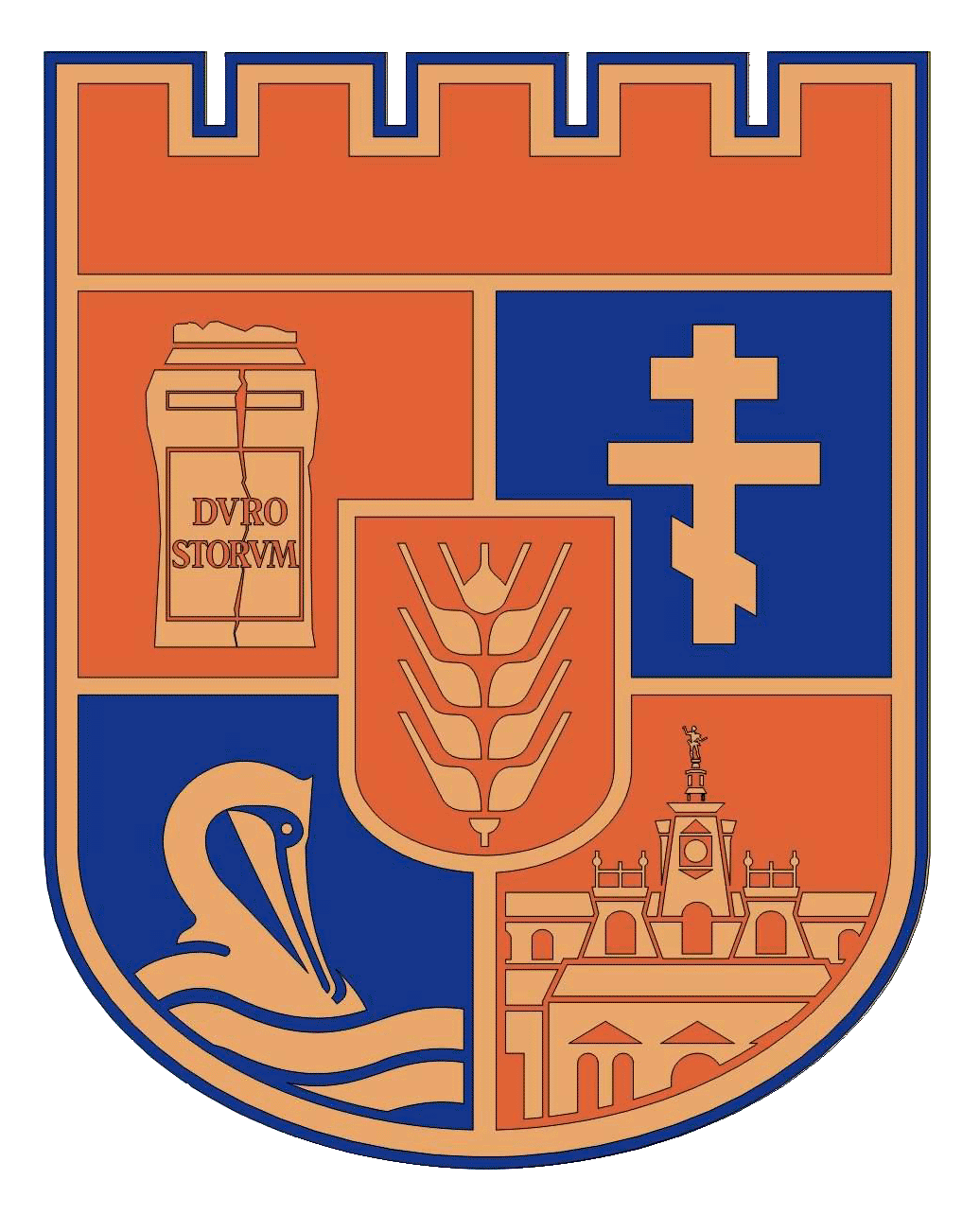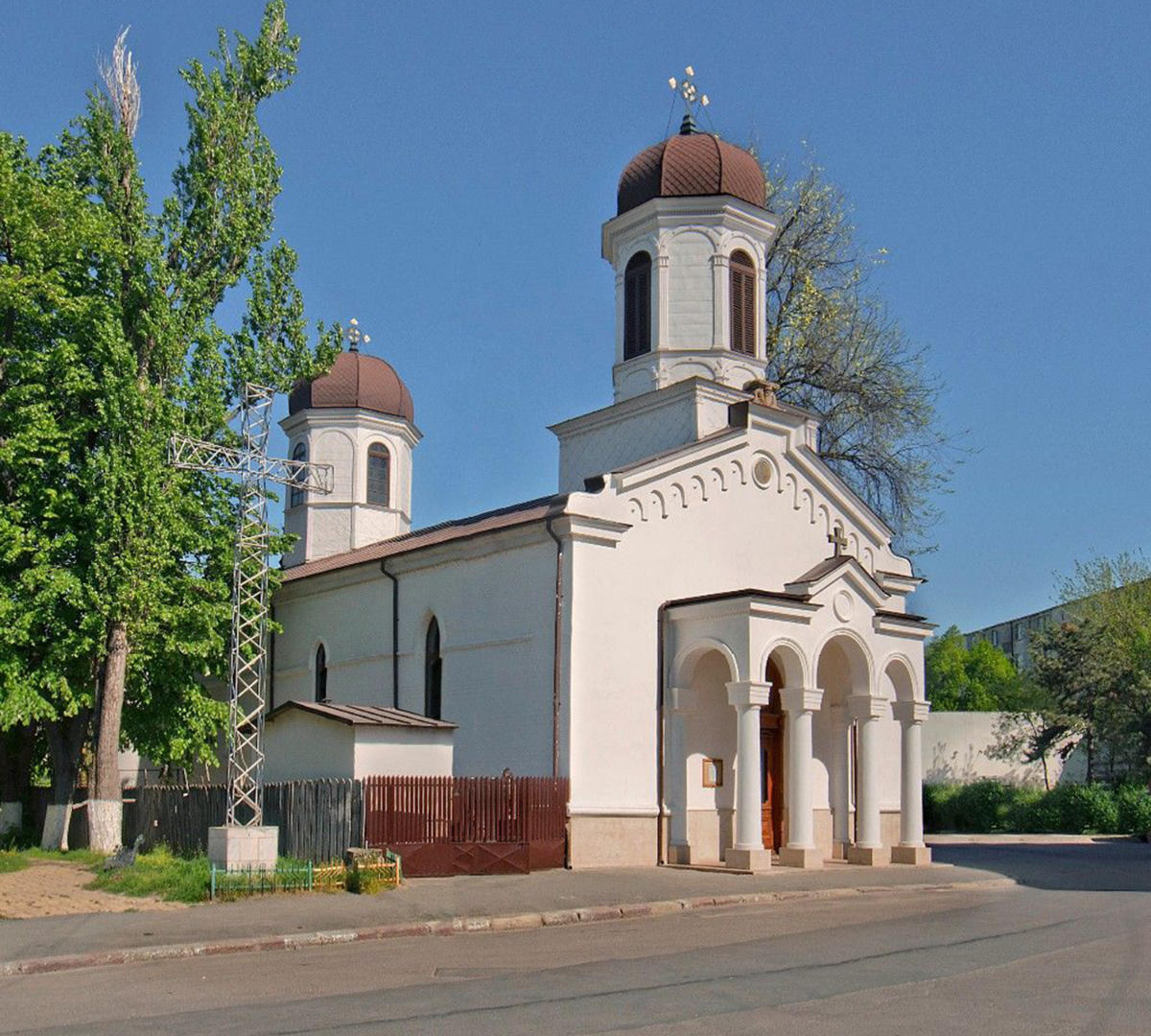St. Nicholas Cathedral
Category TempleLOCATION
Strada Sfantul Nicolae 35, Calarasi, Romania
DESCRIPTION
The St. Nicholas Cathedral is built of brick, on a durable foundation, with a 29 m long, 10.5 m wide and 21 m high semi-circular shaped altar apse. The front porch has a rectangular shape, open and delimited with four round pillars. In the nave and the narthex, the ceiling is straight and rests on two rows of pillars of five, in round shape, with beautiful capitals, reminiscent of the church of the Nativity of God in Bethlehem. There are two towers, one open and one closed, the closed one serving as a bell tower where the two bells are installed. The roof and the tower are covered with galvanized sheet.
The painting of the church, made in oil and in a realistic style, is of great artistic value and was made in 1908 by the Italian painter Orest Cantini. The iconostasis, the pulpit and the two arches, of a special nobility, are made of oak wood by the sculptor M. Babic in 1908. The royal icons, the icon of the patron saint and Saint John the Baptist on the iconostasis are silver-plated, having a special work.
The parish has a functional library. It organizes catechetical activities with both parishioners and students.
HISTORY
The worship of St. Nicholas from Mira Lichiei and the existence of the church in 1630 shows that the sanctuary was very old, its founding year as well as the founding year of the village where it was located being lost in the darkness of time.
On August 1, 1630, a committee of six boyars went to Lichireşti, the old Calarasi name, to hear a case. Then the villagers swore a gospel, which proves that the church exists. The St. Nicholas Cathedral is very old. There are no exact documents stating the date of construction. In Bauer's geographical description it is stated that in 1778 there was a church in Calarasi. Torn almost completely to the earthquake of December 26, 1829.
The lack of documents does not allow us to be able to follow the historical evolution of the cathedral dedicated to St. Nicholas, but some information that has come to us confirms its existence. Thus, in Bauer's geographical description, it is said that in 1778 there was a church in Călăraşi, and on October 19, 1783, Mihail Şuţu ordered for Popa Radu from Lichireşti to be brought to Bucharest, in order to be punished for violating the law and stood as a witness in a trial, without permission and separation from the bishop.
Calarasi was part of the Russian military operations during their war with the Ottoman Empire, during the second half of the 18th century and the first half of the 19th century. In a religious aspect Calarasi won, thanks to the repairs made to the church by the Russians. The first works were done by the Russians in 1812.
The closer we are to the 20th century, the more numerous the documents on the moral-religious life get. Thus, in an account of the moral and material state of the church from April 1895 - March 1896, written by parish priest G.M. Sachelarie it is mentioned that the parish church is old, but well maintained, has a perfect cleanliness and no possible negative remarks on its state.
Priests currently do not have sacerdotal vestments, but their purchase will be provided in the future budget of the church. The holy vessels are in good condition as well as the service books.
In 2008-2010 the paintings were restored, the windows were replaced and the roof with its two towers was restored. In 2011 the old floor was replaced with the current one, from granite, and in 2012 repairs were made to the facade.
The St. Nicholas Cathedral is built of brick, on a durable foundation, with a 29 m long, 10.5 m wide and 21 m high semi-circular shaped altar apse. The front porch has a rectangular shape, open and delimited with four round pillars. In the nave and the narthex, the ceiling is straight and rests on two rows of pillars of five, in round shape, with beautiful capitals, reminiscent of the church of the Nativity of God in Bethlehem. There are two towers, one open and one closed, the closed one serving as a bell tower where the two bells are installed. The roof and the tower are covered with galvanized sheet.
The painting of the church, made in oil and in a realistic style, is of great artistic value and was made in 1908 by the Italian painter Orest Cantini. The iconostasis, the pulpit and the two arches, of a special nobility, are made of oak wood by the sculptor M. Babic in 1908. The royal icons, the icon of the patron saint and Saint John the Baptist on the iconostasis are silver-plated, having a special work.
SITE SIGNIFICANCE
Orthodox Church
VISITOR INFORMATION
It is free to visit.
OTHER INFORMATION
https://audiotravelguide.ro/catedrala-ortodoxa-sf-nicolae-calarasi/
+40 728 136 574
SITE CLASSIFICATION
Religious object




